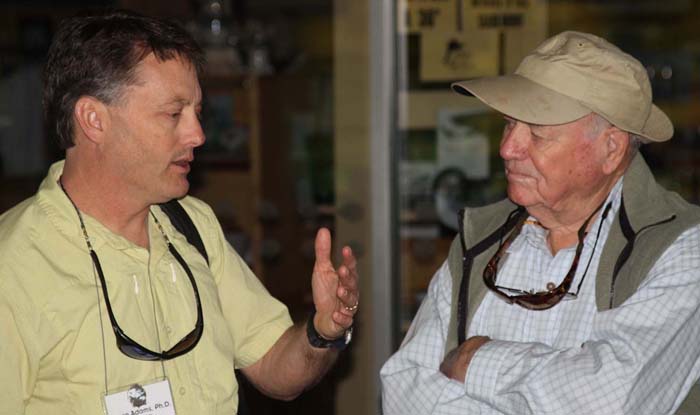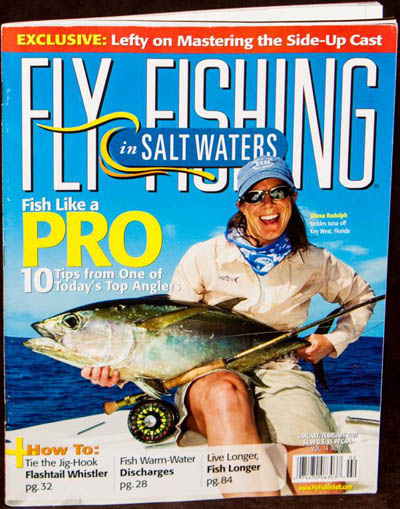
Aaron Adams talking with his friend Lefty Kreh (1925 – 2018) at a past BTT Symposium (2013) held at the International Game Fish Association headquarters in Fort Lauderdale/Dania Beach, Florida. Clement photo.
Lefty Kreh, the father of modern-day fly fishing, picked his dries and nymphs
By Skip Clement
[dropcap]A[/dropcap]t an all day Steve Kantner Presents fly fishing seminar held 11 years ago in Ft. Lauderdale, I had the chance to interview a star-studded cast including the Father of Modern Day Fly Fishing, Lefty Kreh.
He was joined by Andy Mill of tarpon fame and Diana Rudolph, one of the purest fly casters I’ve ever witnessed.
I asked: Lefty, a lot of our readers struggle a bit with what to bring when away from their home fresh waters? Are there freshwater flies that travel well and don’t include the caveat “but?”
He said, “Yes.”

Diana Rudolph on the cover of Fly Fishing Salt Waters. Notice the EXCLUSIVE at top of cover.
Lefty’s basic freshwater dry and nymph fly sSelection:
“There are brief periods when trout feed exclusively on certain hatching insects. But for all of your dry fly fishing you need only a selected few flies, providing the patterns are of different sizes. For example, when gray mayflies are hatching an Adams of the same size will turn the trick.”
Adding: “The presentation is ‘“far more important’” than the specific fly offered any fish.
If you carry the following dry flies (and nymphs) in size from 12 to 22 you’ll be well equipped – providing you make a good presentation.”
Dry Fly Patterns
Royal Wulff & Humpy (for rough water conditions).
Adams (parachute style).
Light Cahill (parachute style).
Elk Hair Caddis
Hopper and ant (for terrestrial flies). We add worms.
Griffith Gnat
Trico
Lefty added: “In hard-fish trout waters smaller dry fly and nymph patterns are more effective.”
Nymph Patterns (size 12 to 20)
Prince Nymph
Gold Ribbed Hare’s Ear
Zug Bug
Pheasant Tail
Copper John





